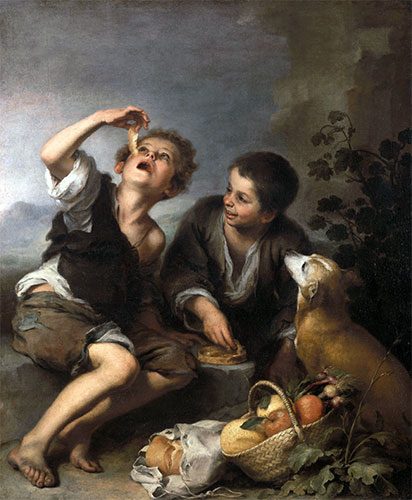Exploring the Legacy of Murillo: A Baroque Visionary

Introduction
Murillo, a celebrated Spanish painter of the Baroque period, is remembered for his emotive religious scenes and captivating portraits. Born in 1617 in Seville, his art continues to resonate with audiences today, highlighting the enduring power of the Baroque style. Understanding Murillo’s contributions is crucial for appreciating the evolution of Western art and the cultural backdrop of 17th-century Spain.
Life and Works
Murillo’s artistic journey began in the vibrant city of Seville, where he was influenced by masters like Francisco de Zurbarán. He quickly gained a reputation for his ability to convey emotion and spirituality in his work. His paintings often depicted biblical subjects, the Virgin Mary, and intimate family scenes, characterized by soft light and rich color palettes. One of his most famous works, “The Immaculate Conception,” is seen as a hallmark of his divine representation style, exemplifying his skill in blending realism with idealism.
Impact and Legacy
Murillo’s style has left a profound influence not only in Spain but across Europe and the Americas. His ability to depict the human soul and emotion resonated with the Baroque ideals of his time, focusing heavily on dramatics and tension. His works inspired later generations of artists, including the Romanticists and the Realists. Today, Murillo’s paintings can be found in prestigious museums worldwide, such as the Louvre in Paris and the Prado Museum in Madrid, ensuring that his legacy lives on for future art enthusiasts and historians.
Recent Exhibitions and Rediscoveries
In recent years, institutions have put renewed focus on Murillo’s works, with exhibitions dedicated to exploring his influence on contemporary artists and culture. In 2020, a notable exhibit titled “Murillo: The Prodigal Son” opened at the Museo de Bellas Artes in Seville, showcasing his most recognized pieces alongside lesser-known works, allowing audiences to appreciate the full scope of his artistry. Such exhibitions help in rediscovering and contextualizing his contributions amidst the prevailing trends of modern art.
Conclusion
As we continue to explore the artistic legacy of Murillo, it is clear that his work holds significance not only in the historical narrative of Spanish art but also in the broader context of global art history. His innovative techniques and profound subject matter have paved the way for future artists. Understanding Murillo’s impact allows us to appreciate the depth of Baroque art and its lasting influence on the art world. The ongoing interest in his work signifies a renaissance of sorts, establishing Murillo as a timeless figure worth studying in the history of art.









